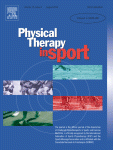 Abdominal muscle EMG-activity during bridge exercises on stable and unstable surfaces
Abdominal muscle EMG-activity during bridge exercises on stable and unstable surfaces
- a Department of Physiotherapy, Józef Rusiecki University College in Olsztyn, 10-243 Olsztyn, Bydgoska 33, Poland
- b Department of Posture Correction, Faculty of Physical Education and Sport in Biala Podlaska, Józef Piłsudski University of Physical Education in Warsaw, Poland
- c Physical Therapy and Exercise Center, Valencia, Spain
- d Institute for Research on Musculoskeletal Disorders, School of Medicine, Valencia Catholic University, Valencia, Spain
- e Fizjo-Sport, Rzeszów, Poland
Abstract
Objectives
To assess abdominal muscles (AM) activity during prone, side, and supine bridge on stable and unstable surfaces (BOSU, Swiss Ball).
Design
Prospective comparison study.
Setting
Research laboratory.
Participants
Thirty-three healthy volunteers from a university population.
Main outcome measures
Surface electromyography of the rectus abdominis (RA), the external oblique (EO) and the internal oblique with the transversus abdominis (IO-TA).
Results
The AM exhibited the highest activity during prone bridge on a Swiss Ball (RA, EO, IO-TA 44.7 ± 19.2, 54.7 ± 22.9, 36.8 ± 18.6 in % of MVC, respectively). The lowest activity was observed during supine bridge on a stable surface and a BOSU (under 5.0). The lowest ratio analyzed on the basis of the relation of EO and IO-TA activity to RA was obtained during prone bridge on the Swiss Ball (1.4 ± 0.7 for EO, 0.9 ± 0.5 for IO-TA). The highest ratio was obtained during prone bridge on stable surface and supine bridges.
Conclusions
The highest level of activity in the abdominal muscles is achieved during prone bridge on a Swiss Ball. However, this exercise provided the lowest activity of the EO and IO-TA in relation to RA. It is essential to conduct further studies verifying the usefulness of using Swiss Ball during core stability training.
Keywords
- Electromyography;
- Swiss Ball;
- BOSU;
- Core stability;
- Sport training

 Abdominal muscle EMG-activity during bridge exercises on stable and unstable surfaces
Abdominal muscle EMG-activity during bridge exercises on stable and unstable surfaces